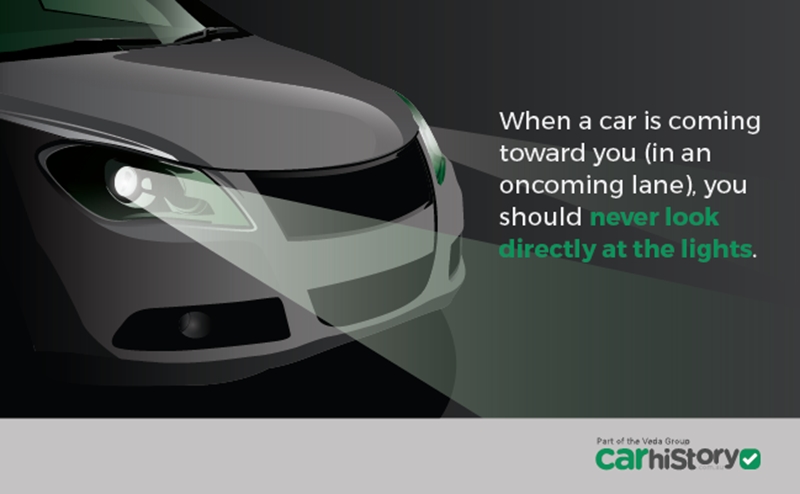
The vehicle identification number (VIN) is composed of 17 characters (digits and capital letters) that act as a unique identifier for the vehicle. A VIN displays the car's unique features, specifications and manufacturer.
The VIN can be found in a couple of places including on the car's registration label (1), on the compliance plate in the engine bay (2) or on the passenger side windshield (3), or on one of the door posts (where the door latches when it is closed) (4). See the image below:
How much experience do you have driving at night? It's totally different to driving in the middle of the day, and there are some things you need to know in order to stay safe on the road after dark. It's more than just keeping yourself safe - it's about making sure other road users aren't at risk as well. You could spend hours finding the right used car, get a CarHistory report to be extra sure, and still not be prepared for driving at night.
Nothing beats real driving experience.
Oncoming traffic looks different. Unknown roads are much more difficult to navigate. Hazards can present themselves and you might not see them. How should you react? Take note of the following tips for safe driving at night, and you'll be more prepared for what's around the corner. Nothing beats real driving experience though, so when you have some time, make sure you head out and get used to the different conditions.
Know how to operate your headlights
Without the sun in the sky, your headlights become your most important tool for driving safely at night. Street lamps will help illuminate the way, but these aren't everywhere. If you need to use your headlights at a moment's notice, or flick your high-beams off for a passing car, you'll want it to be second nature1.
Sit in your car (while stationary) and learn where all of your light controls are. Flick your high-beams on and off, understand the difference between your driving and parking lights, and if you have fog lights, know when to use them. They're very bright, like high-beams, so if they're on and a car passes you, the courteous thing to do is turn them off.
Many modern cars have a mechanism that can change the direction of your headlights as well1 - if you find that you can't see as much of the road ahead as you'd like, try aiming them a little higher.

Avoid staring at oncoming cars
Part of the beauty of driving at night is that you can see when other cars are coming from a long way off. You can use the trajectory of their lights to see them coming around blind corners, if you pay attention. However, when a car is coming toward you (in an oncoming lane), you should never look directly at the lights1.
You know the car is there, and you know how much room you need in your lane to pass safely. Instead of staring at the lights and potentially dazing yourself, look at the lane markings on your side of the road. Your own lights will illuminate these, so you can follow the curve of the road if there is a corner approaching.
Be aware of animals
If you see a couple of green or red glints ahead of you, and they're not moving, it's likely to be an animal.
Out of the city, animals such as possums or wallabies are all over the roads. They might be crossing at night, or scavenging for some roadkill. Many smaller ones won't damage your car or cause too much distress if you hit them, but it's never nice to run something over.
To avoid hitting animals (as much as possible), learn what their eyes look like in your headlights1. If you see a couple of green or red glints ahead of you, and they're not moving, it's likely to be an animal. They'll be frozen in your headlights, so probably won't move unless you slow right down and give them the chance to react.
This isn't a problem you'll often encounter during the day, because the animals aren't going to be caught in your headlights. It's just another night-driving factor that you should consider when you're out on the road after dark.
For more information about the used car you're looking at, get in touch with CarHistory today. Otherwise, happy (night) driving!
1. Popular Mechanics. Own the Night: 10 Tips for Driving After Dark. Accessed March 2017.